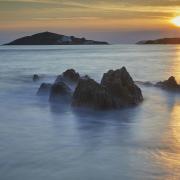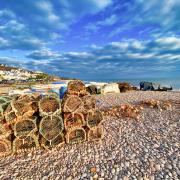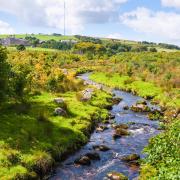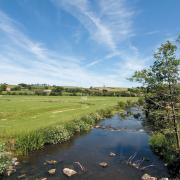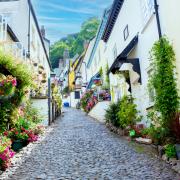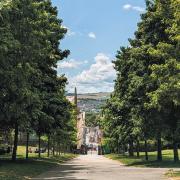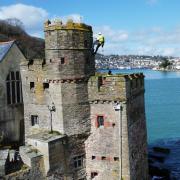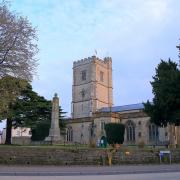Primeval rivers, pre-Raphaelites and a profusion of wildlife... there is much to discover in this east Devon town, says Katy Emma Partridge
Those in pursuit of mini-golf, slot machine arcades and kiss-me-quick hats will need to look elsewhere if they are hoping to find them in Budleigh Salterton. This small slice of West Country loveliness is the archetype of a traditional, unspoilt English seaside town.
The name arises in its history of salt panning which dates back at least as far as Roman times.
Red, white and blue bunting flaps overhead as I potter along the high street which is populated with enough attractive cafes, restaurants and shops to tempt visitors.
I pass by The Octagon where pre-Raphaelite artist, Sir John Everett Millais, came to stay in 1870. It was here that he painted his famous picture The Boyhood of Raleigh in which he imagined local youngsters, Walter Raleigh and his brother, sitting on the beach some 300 years earlier, spell-bound by the enchanting seafaring stories of a veteran sailor.
Whilst Budleigh Salterton gracefully masters beach-side cream teas and fetching striped beach huts, it also makes an extravagant offering to those who love the natural world.

If you venture a short way inland beside the River Otter, you may see a glimmer of the luminous teal feathers of a kingfisher as it stakes out the surging waters for the slick silver flash of a fish. In spring and summer, look out for swallows nesting beneath White Bridge and house martins gathering mud from the riverbanks.
Those who are particularly fortunate might just experience the astonishing sight of a beaver paddling through the river on a hushed summer evening. Beavers have been extinct in Britain for hundreds of years, but two family groups were introduced here and started to breed. They live in burrows at the riverside and co-exist harmoniously with the resident otter population.
The salt marshes with their reed beds and rich fertile pastures at the estuary of the River Otter form a designated nature reserve with distinctive flora and fauna. Profuse with wildflowers, rushes, reeds and grasses, attracting many insects, the site offers a lush feeding ground for resident and summer breeding birds alike, whilst also maintaining a large community of wintering wildfowl and waders. More than 120 species of bird have been sighted here, and they include a few with the highest conservation priority like the black-tailed godwit and the whimbrel.
There is good access to the Otter Estuary with footpaths and visitor information in addition to viewing platforms and a bird hide. The exceptional salt marsh habitat is identified as a Site of Special Scientific Interest along with the neighbouring Triassic sandstone rocks which are of substantial paleontological importance.
As tranquil and understated as Budleigh Salterton is, it also forms part of the Jurassic Coast. One of the wonders of the natural world, its geology represents 185 million years of the earth’s history. In this region, broad pebble beds of hard quartzite were laid down by vast primeval rivers, eventually creating the beach for which the town is known.

I linger for a time beside the colourful fishing boats tied up at the sea’s edge, savouring deep breaths of the briny energising air, and watching the few swimmers and paddleboarders navigating the waves. On such a clear day, it is impossible not to marvel at the startling appeal of those fragile, terracotta-hued cliffs, against the bold sapphire of sea and sky.
I glance down to the smooth oval stones covering the entire beach and reach for one of these, locally named, Budleigh Buns. As I appreciate its warm solidity and tactile contours for a moment, it occurs to me that I hold in my hand a small perfect fragment of the Earth that pre-dates my existence by over four million years.
Replacing the stone where it belongs, I picture it enduring long, long after I am gone, impassively oblivious to the natural splendour all around it.




